MPA’S 142ND PRESIDENT
MICHELLE KELLY
PRESIDENT'S PLATFORM
President Greenley explains how a community shapes its profession. (p. 3)
ECONOMIC SURVEY
Results from MPA's 2025 Economic Survey. (p. 16)
MSPT FOCUS
Use your voice to advance the pharmacy technician profession. (p. 32)

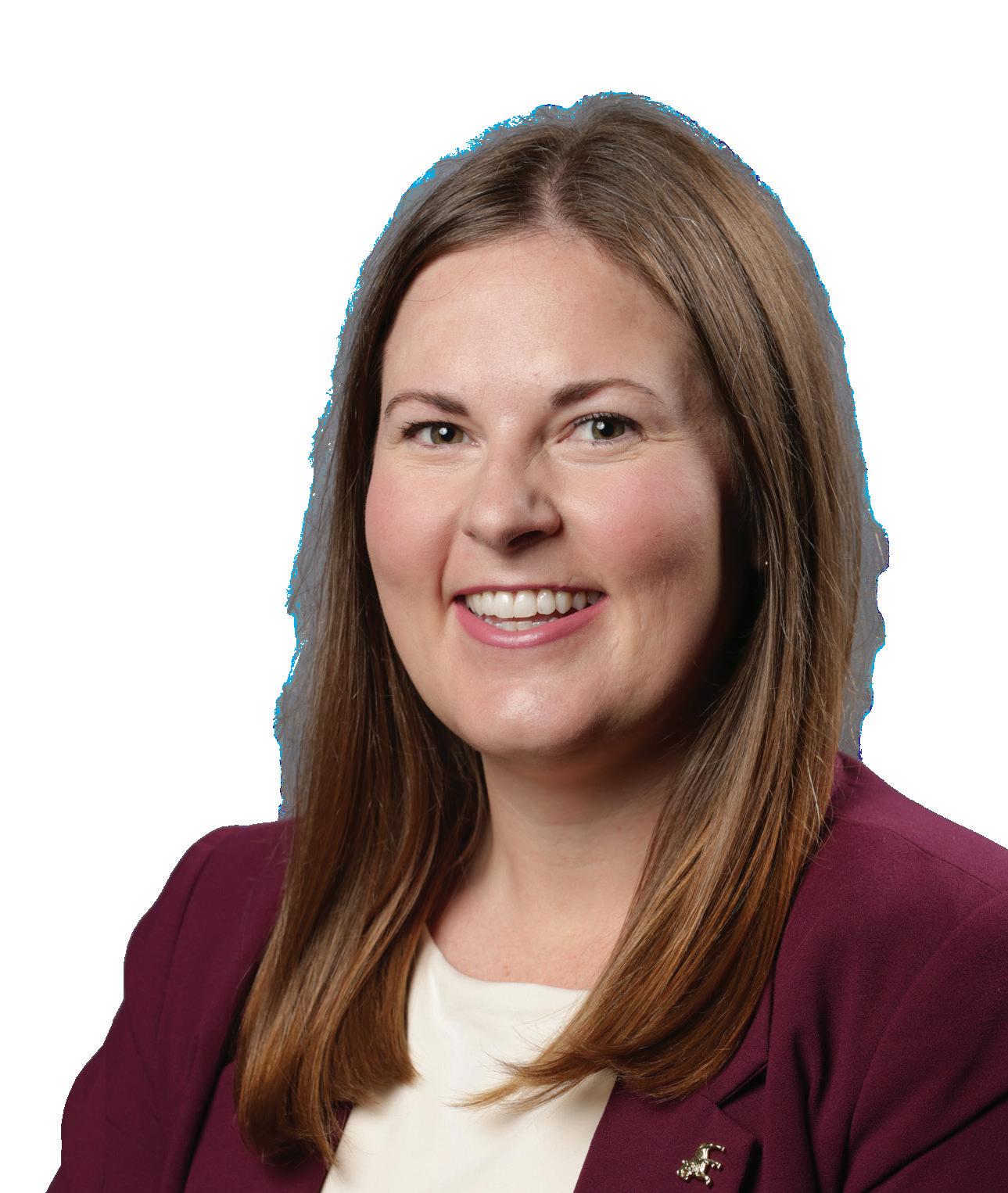


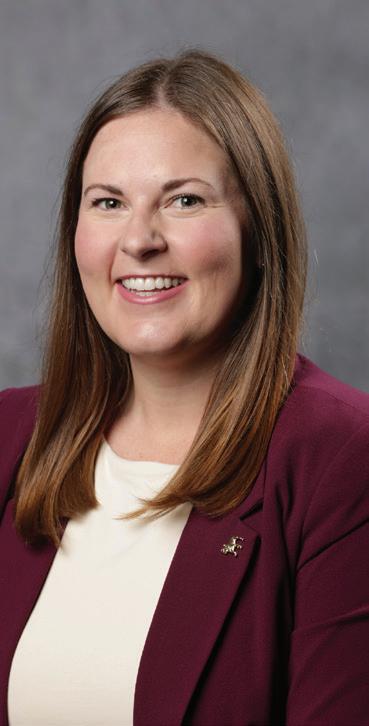
4 CEO Corner
MPA continues to drive change in the pharmacy profession.
5 Events Calendar
Upcoming MPA and national events.
From the Foundation Invest
Pharmacy's future by donating to the Health Professional Leadership Academy. 23 Education Update
The most requested ACE topics for 2026 in Lansing.
7 Student Focus
A recap of Pharmacy Day at the Capitol from a student's view.
24 Bowl of Hygeia
A special tribute to 2024 Bowl of Hygeia recipient Douglas Samodjeny
MPA’S GREATEST ACCOMPLISHMENT, ITS PEOPLE!
How a community shapes its profession

BY RYAN GREENLEY, Pharm.D., MPA president

In the previous issue of the journal, I described MPA as a foundational block for our profession’s success. But foundational to what? The answer is simple: it’s foundational to us – the people who build and sustain this profession.
When we talk about the impact of organizations like MPA, we often highlight initiatives, policy wins, education, or networking events. And MPA delivers on all those fronts. But over time, I’ve realized its greatest contribution isn’t what it does – it’s what it builds.
MPA builds professionals. It draws out quiet strengths, emerging leadership and untapped potential. It shapes active members into some of the most influential voices in our field. And it does so by simply inviting people to purposefully show up.
On day one of my MPA journey, I was a young pharmacist hoping to find my place – even within the 500 square feet of my first pharmacy. Back then, my idea of professional impact was narrow: prepare medications accurately, keep patients and coworkers happy, and call it a good day.
Today, that perspective has expanded dramatically.
Because of the people I’ve met, conversations I’ve had, and roles I’ve held, I now carry the tools to influence the profession on a broader scale. I’ve learned how to lead –and when to let others lead. I’ve gained wisdom about when to speak and when to listen, when to hold firm and when to open my mind.
Most importantly, I’ve developed the humility to know I still have much to learn – and that there is no better place to grow than alongside committed, courageous, visionary peers. That’s the space MPA creates. Every interaction – meetings, committees, side conversations, moments of struggle – has shaped me. Not by instruction, but by immersion. Being surrounded by people doing the work, lifting others and inspiring growth.
We often ask, “What impact does this organization have?” But maybe we should ask, “What impact has it had on the people who serve it?”
MPA’s legacy lives in its people: presidents, board members, committee chairs, long-term volunteers – the visible and the unseen – who carry their MPA experience into hospitals, clinics, classrooms and communities every day.
MPA doesn’t just ask for your time – it transforms it. It gives you back a better, fuller, more powerful professional self that keeps growing.
So, how has MPA given back to the profession? Look at its people, the roles they have played and the impact they have had. The list of accomplishments and influence is impeccable.
This is my final article as MPA president and I want to sign off with gratitude — not just as a leader, but as someone deeply shaped by this community.
To every person I’ve learned from, served alongside, or shared space with: thank you. Your presence and contributions have helped grow not only MPA, but me as well.
Together, we create one of MPA’s greatest impacts: each other’s growth. That growth comes from being present, showing up, supporting each other and building a profession worth being proud of.
If you’re a student pharmacist or new professional wondering if MPA is worth your time: the value is real. It’s an investment that pays back personally and professionally.
And for those who already know that value, I hope you’ll keep showing up. MPA needs your leadership, experience and heart. You are the momentum. Thank you all for the impact you've made on MPA – and on me.

CHANGE THE ONLY CONSTANT IS

BY MARK GLASPER, chief executive officer, Michigan Pharmacists Association
“Science is moving fast and technology continues to redefine roles in
pharmacy. Automation, artificial
intelligence and telepharmacy are changing how Michigan pharmacists and pharmacy technicians interact with patients and manage workflows.”
It has been five years since I became CEO of this great association. My how time flies! The one thing I’ve observed over this time – in pharmacy and, really, throughout life – is the only constant is change.
This is especially true in the world of pharmacy, where innovation, regulation and patient needs are always evolving. From the way medications are developed to how they're dispensed, our profession is in a constant state of transformation. What was standard practice five years ago may now be obsolete. What is innovative today could be commonplace tomorrow.
Navigating Pharmacy’s Shifting Landscape
In pharmacy, change isn’t just inevitable – it’s relentless. Pharmacogenomics, biologics/biosimilars and personalized medicines through compounding are reshaping treatment protocols. We are so fortunate to have research institutions, including the University of Michigan College of Pharmacy, Ferris State University College of Pharmacy and Wayne State University Eugene Applebaum College of Pharmacy and Health Sciences in the state of Michigan at the forefront of these innovations.
The same can be said for the many pharmaceuticalrelated companies we have across Michigan, including Pfizer, SpartanNash and McKesson to name just a few. Staying current isn’t optional – whether it’s research, production or distribution – it’s a professional imperative for pharmacists and pharmacy technicians across the state.
Science is moving fast and technology continues to redefine roles in pharmacy. Automation, artificial intelligence and telepharmacy are changing how Michigan pharmacists and pharmacy technicians interact with patients and manage workflows. In rural areas across the Upper and Lower peninsulas, telepharmacy is bridging access gaps. MPA member roles are expanding from dispenser to digital health navigator, requiring new skills and mindsets.
Legislation and regulations keep evolving as well. MPA has been instrumental in getting bills passed over the past five years to pursue pharmacy benefit manager reform, improve reimbursements and broaden scope of practice. MPA continues to work with the Michigan Board of Pharmacy and government agencies as they refine policies and regulations to further the pharmacy profession now and in the years to come.
MPA: Driving Change from Within
Change can be daunting, but it’s also what keeps pharmacy dynamic and vital. MPA members are uniquely positioned to lead through change with curiosity, courage and compassion.
Lifelong learning is non-negotiable and continuing education isn’t just a checkbox – it’s a survival tool. Whether it’s learning about new drugs, mastering new therapies or adapting to electronic health records, Michigan pharmacists, pharmacy technicians and student pharmacists must embrace learning as a lifestyle and MPA continuing education products and events provide vital opportunities to grow.
MPA plays a pivotal role in shaping the future of pharmacy. Here’s how we actively contribute to transforming the pharmacy profession in Michigan:
• Advocacy: MPA champions legislation that expands pharmacists’ scope of practice, regulates PBMs and promotes public health.
• Professional Development and Education: Through continuing education programs, and Michigan Pharmacy Foundation scholarships and its Leadership Academy, MPA members learn to lead and innovate.
• Practice Support: MPA provides resources for implementing new technologies, navigating regulatory changes and enhancing patient care.
• Recognition and Networking: By recognizing outstanding service through annual awards and encouraging local association and section involvement, MPA fosters collaboration and peer support.
MPA has been driving change not only during my five-year tenure, but since its inception in 1883. It’s what drives your membership value upward. Speaking of membership, please renew your membership for 2026 if you haven’t already. Your investment drives MPA’s vision for change!
EVENTS CALENDAR
MPA events, as well as health observances, are included below. For the most up-to-date information, please visit our online calendar at MichiganPharmacists.org/events
OCTOBER 2025
1-31
3
6-7
Wednesday, Oct. 1Friday, Oct. 31 American Pharmacists Month Nationwide
Friday, Oct. 3 National Student Pharmacists Day Nationwide
Monday, Oct. 6Tuesday, Oct. 7
ASHP Conference for Pharmacy Leaders Chicago
12
17-19
18-21
Sunday, Oct. 12 Women Pharmacist Day Nationwide
Friday, Oct. 17Sunday, Oct. 19
NASPA Fall Meeting New Orleans
Saturday, Oct. 18Tuesday, Oct. 21
NCPA Annual Convention New Orleans
21 Tuesday, Oct. 21 Pharmacy Technician Day Nationwide
19-25
23-26
Sunday, Oct. 19Saturday, Oct. 25 Michigan Pharmacy Week Statewide
Thursday, Oct. 23Sunday, Oct. 26
ASCP Annual Meeting San Diego, California 23
Thursday, Oct. 23 MSHP Board Meeting Hilton DoubleTree, Dearborn 24
Friday, Oct. 24
MSHP Annual Meeting Hilton DoubleTree, Dearborn 25
Saturday, Oct. 25
MPA Upper Peninsula Division Fall Conference The Northern Center, Marquette
NOVEMBER 2025
6
6
11
14
18
20
27-28
Thursday, Nov. 6
PTCB Board of Governors Annual Meeting Alexandria, Virginia
Thursday, Nov. 6 CSPM Board Meeting Virtual
Tuesday, Nov. 11 MPA Executive Board Meeting Virtual
Friday, Nov. 14
MSPT Board Meeting Virtual
Tuesday, Nov. 18
MSCP Board Meeting Virtual
Thursday, Nov. 20
MPF Board of Trustees Hybrid
Thursday, Nov. 27Friday, Nov. 28 Thanksgiving MPA Office Closed
DECEMBER 2025
7-10
Sunday, Dec. 7Wednesday, Dec. 10
ASHP Midyear Clinical Meeting
Las Vegas
24-25
26-30
31-1
Wednesday, Dec. 24Thursday, Dec. 25
Christmas MPA Office Closed
Friday, Dec. 26Tuesday, Dec. 30
MPA Office Open with Limited Staff
Wednesday, Dec. 31Thursday, Jan. 1
New Year’s –MPA Office Closed
Please note: Some board and committee meetings may be subject to a change in format to virtual or in-person at the discretion of the members. Please check the online calendar or contact MPA@MichiganPharmacists.org for more information.

FRIDAY, OCT. 24
MSHP Annual Meeting
Hilton DoubleTree-Dearborn
Join the Michigan Society of Health-System Pharmacists (MSHP) for its 2025 Annual Meeting at the Hilton DoubleTree in Dearborn! The MSHP Annual Meeting offers continuing education for pharmacists, pharmacy residents, student pharmacists and pharmacy technicians, along with a chance for exhibitors and sponsors to showcase products and network with MSHP members. https://www.michiganpharmacists.org/events/mshp-annual-meeting/ register
SATURDAY, OCT. 25
MPA Upper Peninsula Division Fall Conference
The Northern Center at Northern Michigan University, Marquette
Join MPA and its Upper Peninsula Division for the annual UP Fall Conference! The 2025 UP Fall Conference will take place at the Northern Center on the campus of Northern Michigan University in Marquette. https://lecturepanda.com/v2/announcement/ ag1zfnJ4Y2V0cmFja2VychMLEgZDRVVzZXIYgICAsLaLigoM/
QUESTIONS
If you have any questions about any of these MPA education events, please email MPA@MichiganPharmacists.org
WEDNESDAY, NOV. 12, Noon-1:30 p.m.
Pharmacy Technician Immunization Training (live session)
Mixed format – self-study required.
https://www.michiganpharmacists.org/events/pharmacy-technicianimmunization-training-november
WEDNESDAY, NOV. 19, 9-11 a.m.
APhA Pharmacy-based Immunization Training (live session)
Mixed format – self-study required.
https://www.michiganpharmacists.org/events/apha-pharmacy-basedimmunization-training--q4-live-webinar
WEDNESDAY, DEC. 10, Noon-1:30 p.m.
Pharmacy Technician Immunization Training (live session)
Mixed format – self-study required.
https://www.michiganpharmacists.org/events/pharmacy-technicianimmunization-training-december
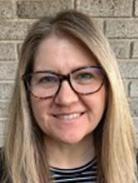
Janet Elliott, administrative coordinator
Janet Elliott’s background is in education and she started her career as a middle school teacher. In recent years, she has put those teacher skills to good use in administrative support roles, first with the Michigan Dental Association Foundation and more recently at Capital Area District Libraries.
When not working, Elliott enjoys giving back to the community in various volunteer capacities. She has filled a number of leadership roles ranging from PTO president when her kids were in elementary school to Personal Needs Bank Coordinator at her church now that she’s an empty nester.
Having lived in the South for 10 years, Janet returned to the Midwest in 2014 and appreciates all that “Pure Michigan” has to offer. However, she was born a Buckeye, her husband works for the Spartans and they have raised two Wolverines, so she maintains strict neutrality when it comes to college athletics.


SHAPING THE FUTURE OF PHARMACY: A Student Perspective from the Capitol
BY SARA HARB, P2 Student Pharmacist, Ferris State University
The future of pharmacy – that is what I witnessed as I stood on the Capitol lawn in Lansing during the 2025 Pharmacy Day at the Capitol (PDAC) event, surrounded by hundreds of pharmacists, student pharmacists and pharmacy technicians. Representing the Ferris State University College of Pharmacy, alongside colleagues from the Wayne State University Eugene Applebaum College of Pharmacy and Health Sciences and University of Michigan College of Pharmacy, I understood firsthand that this day was about preparing the next generation of pharmacists to actively shape the direction of our profession.
From a student perspective, the PDAC experience served as a reminder that our influence on patient care extends far beyond the classroom and the pharmacy. The policies highlighted this year directly impacted how our profession is viewed – whether pharmacies can remain open and whether patients can afford the medications they need. These realities were brought to light by this year’s focus on pharmacy benefit managers (PBMs). Numerous pharmacies in Michigan, from small independent businesses to large chains, have been left with no choice but to close their doors to the communities they serve due to patient steering, claw backs and insufficient reimbursements. Advocacy is how we continue to protect both our patients and our profession.
This was a day of professional growth and advocacy. The most rewarding aspect was allowing student pharmacists to contribute to conversations about advocacy efforts. For many, it was the first opportunity to interact with legislators at a professional level, which helped boost self-confidence, strengthen leadership skills and expand knowledge of how laws affect patient outcomes.
State legislators welcomed our voices as those of the next generation of pharmacists who will continue to influence the policies that govern health care in Michigan. By participating in meetings on transparency, reimbursement and equitable access to care, we demonstrated advocacy as our duty to ensure an equitable and efficient health care system. Standing alongside student pharmacists from other institutions reinforced our shared mission of speaking out for change to better serve our communities.
Pharmacy Day at the Capitol is a memorable experience for student pharmacists. Using our voices and advocacy to actively contribute to crucial conversations is what shapes the future of pharmacy as we envision it. By engaging directly with legislators while collaborating with other institutions, students reaffirm their commitment to driving meaningful change. After all, it is our role to support our patients and bridge the gaps needed to strengthen Michigan’s health care system – and that is the future of pharmacy.

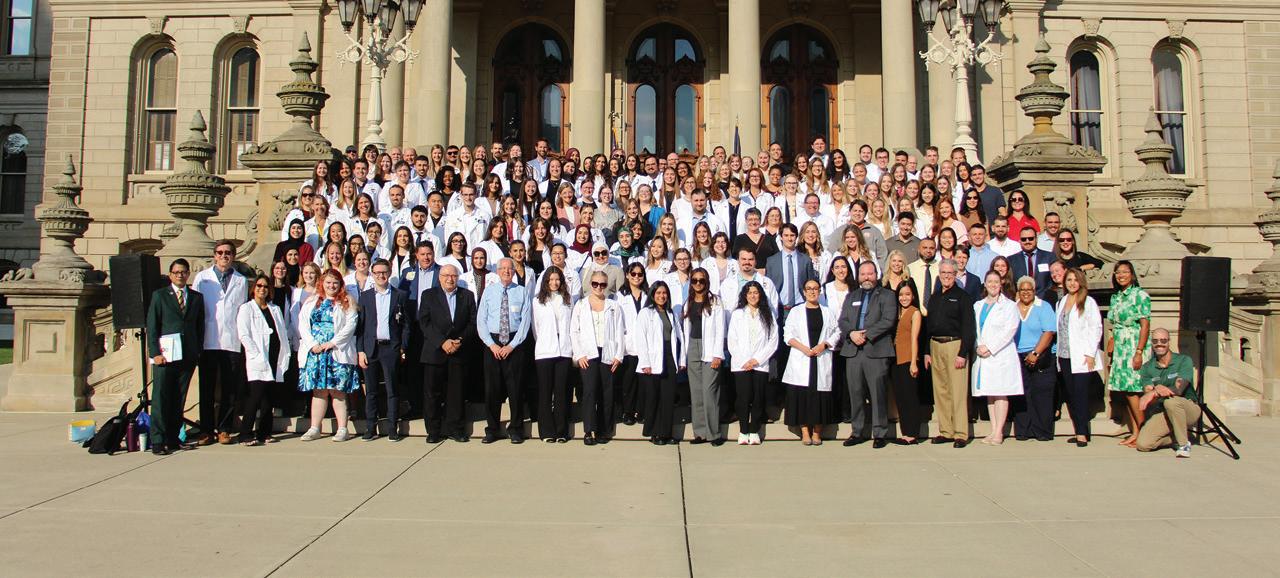
PHARMACY DAY AT THE CAPITOL 2025
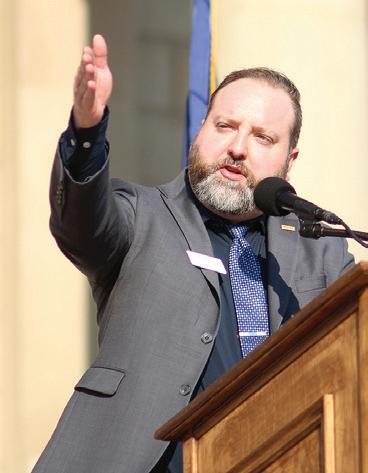



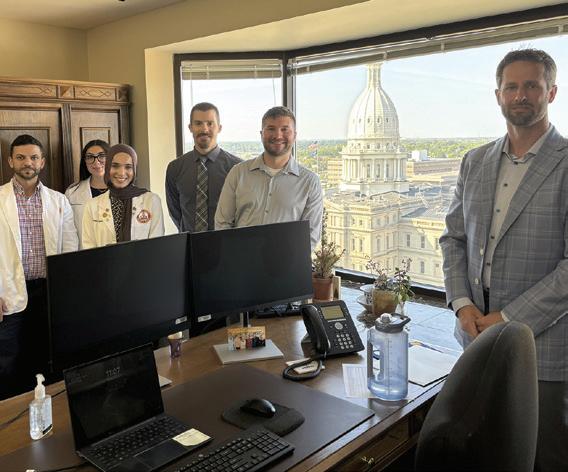

JANET URFER
Janet Urfer, age 78, of Kalamazoo, died on Sept. 13, 2025. She is survived by her husband, Bill; daughter, Mary (Jeff) Harrington; grandchildren Lauren and Carter; and brother, Dale Thompson.
With a ready smile and a welcoming heart, Janet Urfer lived with grace, warmth, and unwavering support for those she loved. Janet welcomed each day as a gift and every person as a friend. She possessed an incredible ability to always smile, firmly believing that "whenever you don't smile, you look terrible." A devoted wife, mother, grandmother, sister and friend, Janet will long be remembered by those she so dearly loved.
On April 2,1947, Janet was born to Ralph and Esther Thompson in Speedway, Indiana, just outside Indianapolis next to Indianapolis Motor Speedway in a small, humble home. Janet had an older brother, R.K. and a younger brother, Dale, who is the only living member of the family. All three siblings graduated from Speedway High School and Indiana University-Bloomington. Janet majored in German and English and was a member of the Sigma Kappa Sorority, which she maintained involvement with in the Kalamazoo chapter until 2000. After graduating college, she moved to Kalamazoo for a paralegal position. She'd go on to work for several attorneys in town, including a patent attorney (Gordon W. Hueschen) with whom she spent most of her career. She enjoyed the challenge of the job and especially appreciated the people she met.
One day, Janet was set up on a blind date with her future husband, Bill Urfer, by mutual acquaintances. They first spoke on the phone, which turned into a late night of fun conversation. They made plans to go blueberry picking the following day. From then on, she and Bill did everything together. The happy couple married in 1981. Bill had her constant support, and they made their home exactly what they needed and wanted it to be. Janet was a wonderful decorator, especially for Christmas. She created such an elegant tree that they ended up leaving up year-round and changing the decorations with the seasons.
Janet enjoyed being Mary’s stepmother and then as “Granny” after Mary and Jeff married and had Lauren and Carter. Janet chose her nickname as “Granny” because her favorite grandmother was called “Granny.” She was very proud of the kids and enjoyed the time spent with them. A woman of many interests and generous service, Janet was active in the Ladies' Library, and she served as secretary for both the Ladies Library and the Southwest Michigan Pharmacists Association, of which Bill ser ved as president for many years. She also sang in the Kalamazoo chorale and the Westwood Methodist choir. In addition to singing, she was a handbell ringer in the church bell choir. After she started ringing handbells at church, she joined the Kalamazoo Ringers, of which she was a member for 30 years. This was one of the most significant parts of her life. She and Bill were also part of a gourmet group of friends. They'd gather at a different home each time. The host would choose the menu and each member was assigned a dish to prepare. They had such fun!
Traveling was a keen interest for Janet and Bill, as they thoroughly enjoyed experiencing what new places had to offer. Cruising on the Rhine River and Russia were among their favorite trips. They found the people to be very nice and wonderful, even though they didn't smile. Their Amazon cruise in the 1990s was also a favorite. They camped along the way with a guide and ate the piranha they caught, which the camp staff cooked for them.
When Janet and Bill retired to Bronson Place, she made many wonderful friends who became more of a family than just neighbors. She was a constant in Bill's life; her love and presence meant the world. Sharing life together proved a great joy.

From humble beginnings in Indianapolis to a life filled with music, travel, and deep connections, Janet made every moment brighter. As we celebrate Janet's life, may we find much comfort in our treasured memories. May we also find comfort in the honor of carrying her legacy forward. In each moment we bring joy to our singing, ringing handbells, decorating for the seasons, traveling with our beloved, or simply sharing a smile, we keep Janet's memory alive and inspiring others as she so inspired each of us.
Memorial contributions in Janet’s honor may be made to Westwood United Methodist Church.
FROM THE DESK OF MEMBERSHIP
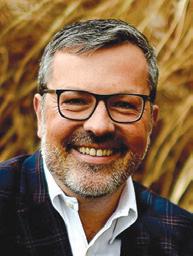
BY BRYAN FREEMAN, chief strategy officer, Michigan Pharmacists Association

Thank you for being a member of the Michigan Pharmacists Association this year. As the calendar turns toward 2026, MPA faces a pivotal moment: member renewals. While the administrative task may seem routine, securing strong membership renewal rates is critical to MPA’s vitality, influence and ability to serve its members in the years ahead. Below are some key reasons why renewing early and robustly matters — not just for the association, but for every pharmacist, technician and student pharmacists in Michigan.
1. Sustaining Advocacy and Political Clout
One of MPA’s core roles is to advocate on behalf of pharmacy professionals in Lansing and Washington. The association acts on important legislative issues that affect your practice and engages members in grassroots efforts to influence policymakers. Political influence is largely a numbers game: a strong membership base sends a signal that the profession is organized, unified and invested. Renewals ensure MPA has the resources and legitimacy to continue representing your interests effectively.
2. Continuity of Educational & Practice Services
MPA offers continuing education, consultations on licensing and practice support tools — from Board of Pharmacy rule interpretations to third-party payer guidance. These services are funded and justified by member dues. A drop in renewal rates means constrained budgets, which could reduce course offerings, staff support, or access to “membersonly” practice resources. Maintaining steady membership helps preserve continuity in these essential services.
3. Networking, Leadership and Influence
MPA’s structure allows members to plug into local associations and practice sections at no extra cost — a free practice section and local association membership is an explicit benefit. Renewing your membership keeps you linked to these networks, enabling collaboration, mentorship and leadership growth opportunities. Moreover, member counts affect representation: the MPA House of Delegates allocates delegates based on dues-paid membership levels. More renewals mean greater representation for your local association or practice area.
4. Economic Stability and Strategic Planning
The predictability of membership revenues allows MPA to plan multi-year initiatives with confidence. MPA already offers two-year renewal packages (with a 10% discount) to encourage longer commitments and smoother financial forecasting. Without strong renewals, programs can be put on hold and the association’s ability to respond to emerging issues may be weakened.
5. Maximizing Value From 2026 Events
One of the highlights of MPA’s calendar is the 2026 Annual Convention & Exposition (ACE), scheduled for April 17-19, 2026, in Lansing. Being a current member often means discounted registration, priority access to sessions and the chance to present or lead workshops. Renewing early or maintaining membership ensures you’re eligible to participate fully – from submitting proposals to networking with peers. Missed renewal could mean missed opportunity.
6. Morale, Identity and Collective Strength
Professional associations are not just transactional – they are symbols of shared identity, commitment and belonging. When many pharmacy professionals let membership lapse, the sense of collective mission weakens. By renewing, you affirm your stake in Michigan’s pharmacy future and show solidarity with your peers. It sends a message: that Michigan pharmacists care about the direction of the profession and are willing to invest in it.
• Be sure to renew now for 2026 – don’t wait until the last minute.
• Consider the two-year renewal option – it provides both savings and longer-term stability.
• Encourage colleagues, new grads and technicians to renew or join – broad participation strengthens MPA’s hand.
• Engage early: once renewed, volunteer for committees, advocacy teams, or education efforts to amplify your impact.
2026 membership renewals are far more than a bookkeeping exercise. They underpin MPA’s ability to advocate, educate, connect and grow. Each membership renewed is a vote of confidence in the future of pharmacy in Michigan – a future where the profession is unified, well represented and prepared to meet evolving challenges in health care.
MEMBER SPOTLIGHT
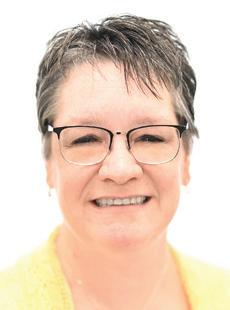
Becki Flegel
LPhT, CPhT, Walmart Pharmacy, 2026 MSPT president-elect
Member Since: 2021
Describe Your Role/Day in the Life: I work in a community pharmacy that is patient centered. We fill medications, call insurance companies and doctor’s offices. I am an immunizing technician, so we are very busy this time of year. We are currently training a new technician. Occasionally, we get to train a new pharmacist or new pharmacy manager. Other than that, we try to be our pharmacist’s support system. Whatever they need us to do, we can do it, sometimes even before they ask. The more I can take off their plate, the more time they have to focus on our patients’ health and safety.
After work I like spending time walking my dogs in the woods. I like reading about historical dates and people. I live with my husband of 30 years and our two youngest boys on 40 acres outside of Kent City.
Why You’re an MPA Member: Until I joined MPA, I never knew that there were so many opportunities available to Michigan’s technicians. Once I became a member, I saw an opportunity to volunteer to be on a committee. The Workplace Environment Committee was my first step into an amazing journey. Pharmacy technicians need a bigger voice, more opportunities, a place to network and to know that their voices are heard and valued. MPA gives us all of these. Working with the MPA staff and the many organizations under them, I could become more than just a voice for technicians.
In September, I was given the opportunity to participate in Pharmacy Day at the Capitol. I can’t say enough about that experience. Not only was I able to meet up with friends, but I networked with other pharmacy professionals, and chatted with lawmakers in their offices – and even elevators. MPA has given me so many opportunities and experiences that are priceless.
Recent Accomplishments: MPA Professional and Educational Affairs committee member, WMPA Executive Board member, MSPT board member, MSPT president-elect starting January 2026.
How MPA Has Helped You Achieve Any Accomplishments: MPA introduced me to some major movers and shakers like Michigan Board of Pharmacy President Rony Foumia and MPA Chief Pharmacy Officer Farah Jalloul-Rizk. Their passion for their profession and the technicians is unwavering. Being able to add my ideas to theirs has made my ideas become realities. We are currently working on having a Technician Day at ACE where technicians can come out for the day, network with MPA members, attend Tech Connect and catch up on their CE’s for one low price that technicians might be better able to afford.
MPA also gave me the opportunity to participate in the Michigan Pharmacy Foundation’s Health Professional Leadership Academy, which made me see who I really am and what I’m capable of achieving. It also helped me establish some goals. The crazier the better. All my “crazy” goals have been achieved. And, every time I achieve a goal, a new one pops up.
All along my path, MPA has placed some extraordinary people in my path who have influenced, and enhanced who I am. My list of accomplishments will grow longer with every new member I meet. My hope is that I can be the person who enhances someone else’s journey in MPA.
New MPA members
(July 1-Sept. 30)
Zana Aamar
Marwah Abdulhadi
Tahseen AI-Saeed
Annette Akarageanes
Joshua Akers
Ali Al Anbaky
Talal Al-Asri
Noor Alhajj
Reham Alkohaif
Rami Alsubari
Iyana Amos
Jessie Anderson
Angeline Ang
Abeer Aqrunfle
Aisha Arnaout
Alanna Atendido
Manaal Azeem
Cynthia Ball
Claudiu Baran
Alaina Belisle
Basel Berry
Kayla Berry
Tara Berry
Tasha Berry
Ayden Betancourt
Mohammed Beydoun
Ryleigh Beyersdorf
Neal Bieszke
Sarah Blanck
Nathan Botos
Pierre Boutros
Hanna Brock
Olivia Browne
Lauren Burkhardt
Quincy Cammon
Seth Carroll
Carlo Castiglione
Randy Chambers
Kevin Chung
Betty Clymer
Lynn Coe
Lilyana Coleman
Sha'Darrian Cone
Jose Cordero Mangual
Ashley Crane
Lauren Csurgo
Chad Curtis
Hannah D'Antonio
Fatema Dabaja
Lea Dayco
Garrett Deasy
Meeka DeBevoise
Michelle Dierker
Rachel Dimaguila
Ethan Dinardo
Asma Elmabruk
Allesandra Fakih
Salman Ahmed Ferdous
Kylie Ferguson
Julie Fisher
Kayla Fleury
Samuel Fordjour
Ahmed Fouda
Faris Gamaladeen
Emma Gappy
Ana Gilaj
Sofia Goeman
Tanner Gohring
Andrew Gourov
Tanya Graham
Tonya Griggs
Carley Grove
Salma Gulam
Natasha Gupta
Joceline Gutierrez
Maria Hana
Kayla Harrell
Beyonce Harrell-Pilar
Marisa Hartwig
Muneeba Hasham
Erin Havrilka
Karly Heino
Allegra Hendricks
Jeffrey Holm
Theresa Hoover
Natalie Hugan
Ida Iakotowiafe
Megan Irvine
Nura Itani
Jumana Jameel
Christy Jenkins
Charles Jerore
Aiman Joumblat
Sukhmanpreet Kaur
Megan Kelley
Sarah Khan
Robert Kina
Shahad Kizi
Breana Knust
Jude Kobaia
Melissa Krantz
Brittany Lenhart
Kimberly Lewis
Lanny Lo
Vincent Lowery
Sammy Lymon
Lori Mackinder
Chad Madsen
Julia Magda
Zaid Malouhi
Jamie Mangas
Tela Marie Manley
Jocelyn Martindale
Madysen Mattias
Austin Mattson
Jane McDonnell
Jacqueline Mcgee
Seth McKinney
Isaac Measel
Olivia Menchaca
Natalia Merow
Ava Merrihew
Gabriella Mignosa
Mihir Patel Mihir Patel
Alicia Miranda
Roubir Moawad
Hattie Moore Walton
Jordynne Morelan
Nagham Mortada
Sara Moussa
Ronith Murali
Kaycie Murphy
Ryan Murphy
Olivia Nalu
Alena Namoo
Sukaina Nasereddine
Hassan Nasser
Kathleen Nguyen
Natilee Ninness
Fardeen Nur
Ekenedirichukwu Obi
Hussein Ollaik
Kari Ostaszewski
Ashley Ottjepka
Khusbu Patel
Mariana Perez Lugo
Amy Phan
Amanda Pickering
Onohije Pogoson
Noah Putris
Daniela Raczy
Sara Rashid
Omtha Razoky
Reema Reemahammoud
Seth Reisler
Isabella Rendleman
Claire Richardson
Ruba Rizvi
Ahmad Rkain
Leah Sage
Neena Sandhu
Isabella Saracino
Ashley Sauro
Madeline Schneider
Jennifer Sebolt
Gisele Sema
Nadeen Seman
Melanie Semma
Jeanette Shaffer
Hadil Shalan
Abdullah Shareef
Lorna Sharpe
Devina Sharrak
Amy Shedlock
Shelley Shen
Marsela Shore
Tamara Sindy
Nicole Slain
Emily Smith
Kevin Smith
Issa Sobh
Matthew Sortland
Payton Sullivan
Manju Sunny
Sana Taleb
Sajida Tarraf
Shelia Taurianen
Keondra Thomas
Robyn Thompson
Norah Tracey
Kendal Truemner
Maha Uddin
Dylynn Vanderschaegen
Lauren VanDerveer
Anna Vo
Steven Voller
Joseph Ware
Donna Washington-Brown
Carolyn Wassink
Cei Wheeler
Briana Whitt
Collin Wierda
Rebecca Williams
Whitney Wolfe
Robert Yeshe
Mariam Yousif
Adelisa Zahirovic
Brent Zahn
Ben Zalupski
Hailey Zalupski
Iva Ziu
MPA EXECUTIVE BOARD


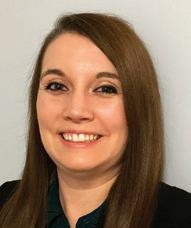
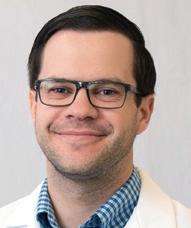

PRACTICE SECTION BOARDS

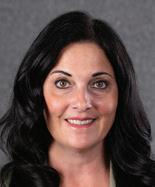




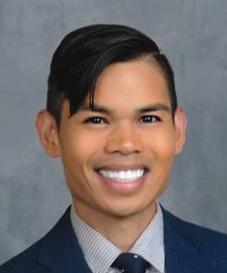


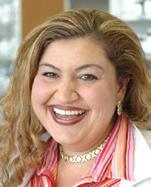


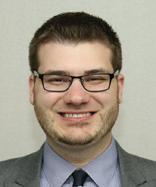
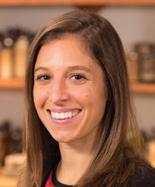



SUPPORT TOMORROW’S LEADERS:
INVEST IN THE MICHIGAN PHARMACY FOUNDATION’S
HEALTH PROFESSIONAL LEADERSHIP ACADEMY
FOSTERING THE FUTURE OF PHARMACY THROUGH LEADERSHIP DEVELOPMENT

BY RICK DRABEK, executive director, Michigan Pharmacy Foundation

As a dedicated supporter of the pharmacy profession, you understand that the future of health care relies on innovative, compassionate and visionary leaders. Today, I invite you to join in advancing this future by supporting the Michigan Pharmacy Foundation’s Health Professional Leadership Academy (HPLA).
The pharmacy landscape is rapidly evolving. New therapies, technologies and patient care models are transforming the profession. In this dynamic environment, strong leadership is not a luxury – it is a necessity. The HPLA program is designed to equip Michigan’s pharmacists and emerging pharmacy leaders with the skills, confidence and vision they need to lead effectively in this changing world.
Why Leadership Matters in Pharmacy
Pharmacy leadership is about more than management; it’s about inspiring excellence, advocating for patients and driving meaningful change. When we invest in leadership development, we empower pharmacy professionals to:
• Champion patient safety and improve health outcomes
• Innovate in practice settings and respond to community needs
• Mentor and inspire the next generation of pharmacists
By participating in the HPLA, pharmacy professionals build networks, sharpen their skills, and become agents of transformation – ensuring that Michigan remains at the forefront of pharmacy excellence.
Real Voices, Real Impact
“This course is extremely valuable in being able to make self-assessments and analyze personal traits and characteristics. If you are looking for an opportunity to grow as a leader and develop skills, this is the course.”
— Andrew Wechter, manager, infusion pharmacy services, University of Michigan Health, Michigan Medicine, 2022-23 graduate
Andrew’s experience reflects the transformative power of HPLA: helping participants gain deeper selfawareness and develop the leadership skills essential for navigating today’s complex health care environment.
Your Gift Makes a Difference
To “Foster the Future of Pharmacy,” we must invest in our pharmacy leaders today. Your generous contribution to HPLA will provide scholarships, mentoring opportunities and innovative programming that might otherwise be out of reach for many aspiring leaders. With your support, we can nurture a diverse and talented leadership pipeline – one that reflects the communities we serve and meets the challenges of tomorrow head-on. Whether you are a proud pharmacy professional, a grateful patient, or an advocate for better health care, your partnership in this effort will have a lasting impact. Together, we can empower pharmacy professionals to be leaders who inspire, innovate and serve with heart.
Please join me in donating to sustain the Michigan Pharmacy Foundation’s HPLA program.
Donate Today!
Your gift today is an investment in the future of pharmacy – a future where effective leadership fosters healthier communities and brighter tomorrows for all.
Thank you for believing in the power of leadership to drive our profession forward. With your help, we are truly “Fostering the Future of Pharmacy.”
"Whether you are a proud pharmacy professional, a grateful patient, or an advocate for better health care, your partnership in this effort will have a lasting impact. Together, we can empower pharmacy professionals to be leaders who inspire, innovate and serve with heart."


BY FARAH JALLOUL -RIZK, chief pharmacy officer, Michigan Pharmacists Association
2025 Michigan Pharmacy Economic Survey
In the 61st Michigan Pharmacy Economic Survey, the Michigan Pharmacists Association received more than 2,000 responses from pharmacists, pharmacy technicians and student pharmacists. The data provided through this survey gives us insight into the trends in the pharmacy workforce, including salary, benefits and job responsibilities. Complete responses were obtained from 1,104 pharmacists, 47 student pharmacists and 894 pharmacy technicians. Responses were only excluded from the survey if they included incomplete information or if the data provided could not be interpreted accurately. Table 1 provides an overview of the demographics collected.
Table 1: Overview of Demographics
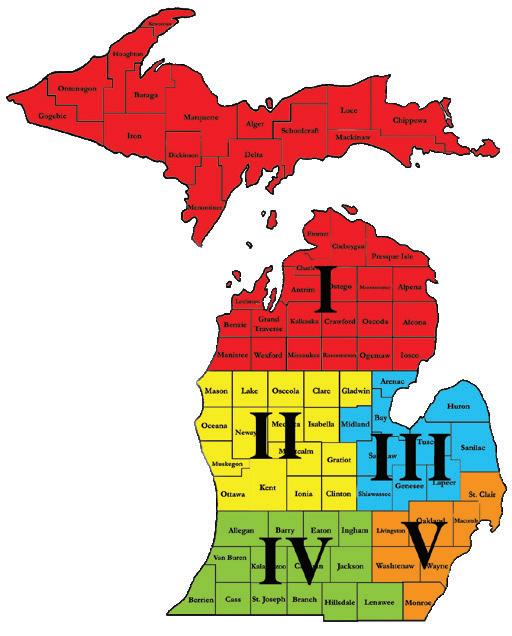
Responses by Region
The responses are classified based on various respondent characteristics such as age, gender and geographic region. The state was divided into five regions, as shown in Figure 1. The response rate from each region was relatively equal regarding population density, with Region V having the most responses. The breakdown occurs as follows: Region I (9.4 percent), Region II (16.4 percent), Region III (13.7 percent), Region IV (12.5 percent) and Region V (48 percent). A full breakdown of respondents by region and category is shown in Table 2
Table 2: Regions Breakdown
Figure 2 – Pharmacist Responses by Practice Site
Annual Salary
Figure 2 demonstrates the percentage of pharmacist responses by practice site. The most significant proportion of respondents practiced in the health-system setting, followed by chain community pharmacy and then independent community pharmacy. A total of 4.6 percent identified as independent pharmacy owners. It is important to note that some respondents identified with more than one practice site. The “other” category for pharmacist practice settings included: retired or not currently practicing pharmacy, mail-order and closed-door fulfillment pharmacies, specialty clinics, federally qualified health centers (FQHC), and positions in consulting, informatics and technology.
n Ambulatory Care
n Chain Community Pharmacy (seven or more stores)
n Consultant Pharmacy
n Clinic
n College of Pharmacy/Academia
n Government
n Health-System/Hospital
n Home Infusion
n Independent Community Pharmacy
n Long-term Care
n Managed Care/Health Plan
n Outpatient Retail Pharmacy
n Pharmaceutical Industry
n Specialty Pharmacy (Nuclear, Compounding, etc.)
n Other
3 – Pharmacy Technician Responses by Practice Site
Figure 3 demonstrates the percentage of pharmacy technician responses by practice site. Similar to the pharmacist respondents, some identified with more than one practice site. Chain community pharmacy was the most significant response, then health system, followed by outpatient retail pharmacy. The “other” category for pharmacy technician practice settings included: central-fill operations, FQHC, tribal pharmacy and hospice pharmacy.
n Ambulatory Care
n Chain Community Pharmacy (four or more stores)
n Consultant Pharmacy
n Clinic
n College of Pharmacy/Academia
n Government
n Health-System/Hospital
n Home Infusion
n Independent Community Pharmacy
n Long-term Care
n Managed Care/Health Plan
n Outpatient Retail Pharmacy
n Pharmaceutical Industry
n Specialty Pharmacy (Nuclear, Compounding, etc.)
n Other
— ECONOMIC SURVEY —
Pharmacy technician respondents reported a majority (69%) are nationally certified through Pharmacy Technician Certification Board (PTCB), while 5% obtained certification through the National Healthcareer Association (NHA). A total of 26% reported not being certified. A plurality (49%) stated that they became nationally certified to meet employer requirements, 37% stated it is to meet State Board of Pharmacy requirements for licensure. Others (26%) indicated they needed to meet educational or training program requirements. But most also chose “to earn a higher salary” and “advance my career” (5%). In addition to a national certification, 12% reported holding a PTCB-Advanced Certified Pharmacy Technician (CPhT-Adv) credential, 4% have a Compounding Sterile Preparation Technician (CSPT) certification and 1% are Certified Pharmacy Technician Educators (CPTEd).
Among respondents, 24% have worked as a pharmacy technician for one to three years, the largest group. Following that, 16% report four to six years, 16% report seven to 10 years, and 15% have more than 20 years of experience. Another 14% have worked 11 to 15 years, 8% have 16 to 20 years, and 7% have less than one year of experience. Among respondents, 35% have worked for their current employer for one to 3 years, making this the largest group. Twenty percent report four to six years, while 14% have been employed for less than one year. Additionally, 11% have worked seven to 10 years, 9% have more than 15 years, and 9% report 11 to 15 years with their current employer.
More than half of technician respondents (53.2%) received their training through their employer (Board of Pharmacy Approved Employer Training). About 23% trained through a community college or private institution, while 18% gained skills through on-the-job training.
Table 3 lists the mean annual salary of practicing pharmacists by gender and practice site. The average (mean) salary for females was $145,925 and $153,103 for males.
Table 3 – Mean Annual Salary of Practicing Pharmacists by Gender and Practice Site
Based on the data presented, all practice settings show salary growth from 2023. Overall, the mean annual salary rose from $137,853 in 2023 to $154,182, a gain of about 12%. Gender pay differences narrowed slightly, indicating a modest move toward parity.

More than half of technician respondents (53.2%) received their training through their employer (Board of Pharmacy Approved Employer Training). About 23% trained through a community college or private institution, while 18% gained skills through on-the-job training.
Table 4 breaks down the average number of pharmacist hours worked per week by practice setting and the average hourly wage for full-time pharmacists by practice setting.
Table 5 shows the average number of hours worked and the hourly wages for pharmacy technicians.
Table 5 – Pharmacy Technician Average Hours and Wage by Practice Setting

"The
average hours worked per week
for
pharmacists and pharmacy technicians were 42 and 37, respectively. When
The average hours worked per week for pharmacists and pharmacy technicians were 42 and 37, respectively. When asked about a raise in 2024, 63.5% of pharmacists and 61.5% of pharmacy technicians reported a pay increase. The average raise was $2.68/hour for pharmacists and $2.50/hour for pharmacy technicians. When asked how many years it had been since their last salary increase, 41.14% of pharmacists said less than a year, while 23.86% reported one year. Pharmacy technicians showed a similar trend, with 51.02% saying less than a year and 22.94% reporting one year.
asked about a raise in 2024, 63.5% of pharmacists and 61.5% of pharmacy technicians reported a pay increase. The average raise was $2.68/hour for pharmacists and $2.5/hour for pharmacy technicians."
— ECONOMIC SURVEY —
Employment Benefits
Table 6 shows employment benefits, including insurance, paid time off and additional fringe benefits. The majority of respondents indicated being offered some form of non-salary compensation. Twenty-three percent of pharmacists and 32% of pharmacy technicians were not provided insurance benefits, but nearly 95% of student pharmacist respondents indicated they received no insurance benefits. Student pharmacists were not compensated as much with fringe benefits, which could be due in part to the roles of student pharmacists as well as the part-time nature of their positions in the pharmacy.
Table 6 – Employment Benefits for Pharmacists, Technicians and Students
Student Pharmacist Observations
While the response of student pharmacists was limited in this survey, the information these participants provided sheds light on how the profession may shift over the coming years as students begin to graduate. Figure 4 outlines the breakdown of respondents based on their years in pharmacy school. The majority of those who participated were in their P1 year in 2024. According to the survey, a majority of respondents are currently working as interns. Specifically, 43% are employed in a chain pharmacy and 38% work in a hospital or health-system setting. A smaller share, 4%, are interning in an independent pharmacy. Meanwhile, 15% of respondents reported that they are not currently working. Among respondents, 52% reported earning a B.S. degree, while 4% hold a B.A. and 2% have an MBA. Additionally, 22% indicated they have not earned a prior degree.
Of the students that responded, 82% indicated they plan on practicing in the state of Michigan upon graduation, with 64% stating they are also planning on pursuing a residency after graduation. Because many students can earn certifications to provide immunizations and point-of-care testing while in pharmacy school, 95% of respondents indicated they are certified to provide immunizations. Still, only 9% are certified to administer point-ofcare tests. In addition, 5% stated that they were certified to provide MTM. This could be due to the number of P1 students who completed the survey. Interestingly, 28% and 26% of the students obtained Mental Health First Aid training and Pharmacy Technician Certification Board (PTCB) certification. The average number of hours a student pharmacist worked in 2024 was 14 hours a week, but respondent submissions ranged from zero hours a week to 40, when not in school. The average hourly wage for a student pharmacist was $21. Because of the varying schedules of pharmacy students, their diverse backgrounds and previous education, how frequently they work and their role in the pharmacy, hourly wages may vary widely. Thirty-two percent of student pharmacists reported a pay increase in 2024, while 59% shared they did not receive a pay increase. The average pay increase was $1.21, with 24% indicating they have never received a salary increase and 24% received the increase less than one year ago.
*Technician certification and licensing fees as a combined benefit
— ECONOMIC SURVEY —
Many students also received scholarships to fund their education, with 58% of student respondents reporting they received a scholarship. These awards ranged between $1,000 and $22,000.
Figure 4 – Student Pharmacist Respondents by Year
Table 9 – Credentials of Respondent Pharmacists
BOARD SPECIALTIES
Additional Observations and Conclusions
Additional Pharmacist Data: 308 out of 1,104 respondents reported that they have completed a post-graduate residency or fellowship. Twentyfour percent completed a post-graduate year 1 (PGY-1) residency, 7% completed a PGY-2 residency and 2% completed a fellowship. Tables 8 and 9 provide additional detail regarding respondent pharmacist credentials. Other credentials include bachelor’s degrees, medical science liaison, masters in health administration and certified specialty pharmacy. Board certifications are increasing year-over-year and expanding into other health care and pharmacy practice facets. Of 450 pharmacist respondents, 121 indicated that they received board certification. See Table 9 for a breakdown of board certifications. In addition to the credentials, 78% indicated they were certified to provide immunizations, 42% were certified to provide point-of-care testing and 48% were certified to provide MTM services.
Table 8 – Credentials of Respondent Pharmacists
In the survey, 70.49% reported receiving an immunization certification. Medication Therapy Management certification followed at 27.36%, and 23.27% received point-of-care testing training. Hormonal contraceptive prescribing was reported by 6.38%, while 3.86% were Certified Diabetes Educators and 0.91% were Certified Geriatric Pharmacists. Certified Pain Educators made up 1.02% of respondents, and 1.36% were Certified Anticoagulation Care Providers. Other services accounted for 3.75%, and 24.18% reported none of the listed options.
Additional Pharmacy Technician Data: Thirty percent of the respondents hold an associate degree, while 20% hold a bachelor’s degree. Of the 480 respondents, 78% were Pharmacy Technician Certification Board (PTCB)-certified pharmacy technicians, while only 5% identified as a PTCB-advanced certified pharmacy technician (CPhT-Adv). Ten percent of respondents also identified as a Compound Sterile Preparation Technician (CSPT)-certified pharmacy technician. Forty-nine percent of respondents reported that their employer pays a higher hourly rate to certified pharmacy technicians. The average increase in hourly wage was reported to be $1.76.
Student Loan Debt: Among the respondents, 98% indicated they graduated with debt. Of those, 18% owed more than $150,000, while 19% were between $100,001 and $150,000, with 37% of these respondents indicating they had less than $100,000 of debt upon graduation. The amount of debt upon graduation is listed in Figure 5. Of those who indicated they graduated with debt, 28% noted that they are still paying off student loan debt. Figure 6 highlights the amount of debt currently held by respondents based on age. Those 65 years of age or older reported no remaining student loan debt.
Figure 5 – Student Loan Debt for Pharmacists After Graduation
Purchasing Budget: 201 pharmacist respondents reported they have the authority to make purchasing decisions for their respective organization. Table 10 outlines the purchasing budget results. It is important to note that the data written does not differentiate between different practice settings.
n Less than $5,000 n $5,001-$25,000 n $25,001-$50,000
n $50,001-$75,000 n $75,001-$100,000 n $100,001-$125,000
n $125,001-$150,000 n More than $150,000
Relevant Comparisons
The 2025 economic summary included approximately 1,000 more participants than the 2023 survey, which may have influenced the observed differences between the results. The average salaries for pharmacists showed an increase from 2023 to 2024 data, with the pay gap between female and male pharmacists narrowing. Pharmacy technician salaries also showed a slight increase from 2023.
Thank you to everyone who participated in this year’s economic survey. Without your participation, this study would not be possible. Thank you for your continued involvement in MPA and support in future endeavors.

"Thank you to everyone who participated in this year’s economic survey. Without your participation, this study would not be possible. Thank you for your continued involvement in MPA and support in future endeavors."


BY ASHLEY BUILTA, Pharm.D., MBA, MPA director of professional development and education
ACE TOPICS
Welcome to fall and with that, some thoughts around what educational programming you want to see at the Annual Convention & Exposition!
While I think years in advance about the logistics of holding ACE (hello site visits for 2029), our educational programming fills up much closer to the year's event. How it works: you submit your proposed session idea by Oct. 31 and a subgroup of the Professional and Educational Affairs Committee reviews all the proposals and selects the sessions. The MPA education team then works with the presenters to get those sessions accredited for continuing education. After that, I use a ton of sticky notes and a grid to piece together where and when the sessions go!
The Call for Proposals is open for educational sessions at ACE 2026 in Lansing!
These were the most requested topics by ACE 2025 attendees:
REQUESTED TOPICS FOR NEXT YEAR
Law & Regulatory
A.I.
Technician retention
Respiratory
Cardiology
Prep & PEP
Implicit bias
Long COVID-19
Infectious Disease
Genomics
Feel like you have a session to contribute? Go ahead and submit now!
“How it works: you submit your proposed session idea by Oct. 31 and a subgroup of the Professional and Educational Affairs Committee reviews all the proposals and selects the sessions. My education team then works with the presenters to get those sessions accredited for continuing education. After that, I use a ton of sticky notes and a grid to piece together where and when the sessions go!”

SUBMIT A PROPOSAL

A CHAMPION FOR PHARMACY AND COMMUNITY

DOUGLAS SAMOJEDNY, 2024 BOWL OF HYGEIA WINNER
NASPA, the APhA Foundation, and the Michigan Pharmacists Association are proud to recognize Douglas Samojedny, RPh, as a 2024 Bowl of Hygeia recipient for his exceptional contributions to pharmacy and community service in Michigan.
A Calling Rooted in Compassion and Family
For Samojedny, pharmacy is not just a profession, it’s a legacy. Inspired by his father, a pharmacist and independent pharmacy owner, Samojedny found his passion early in life by working at the family business. There, he witnessed firsthand the impact of pharmacy as more than dispensing medications — it was about care, compassion and connection.
“Pharmacy became more than just a career choice; it became a calling,” he said. That sense of purpose has guided his career from clinical care in hospitals to directing services at Henry Ford Pharmacy Advantage, where he leads operations that serve over 50,000 patients through specialty and mail-order pharmacy.
A Lifelong Commitment to Community
Samojedny's service to his community spans decades. He has organized health fairs and blood drives and contributed to educational outreach through the Breathers Club, a support program for individuals managing chronic respiratory conditions such as asthma and COPD. He regularly volunteers at free flu clinics to help ensure broad access to preventive care.
His volunteer efforts extend beyond direct patient care. As a long-time member and officer of local and state pharmacy organizations since 1984, Samojedny has helped shape the profession. He continues to give back by mentoring future pharmacy professionals, serving on multiple Pharmacy Technician Advisory Boards, and advocating for meaningful engagement between pharmacists and their communities
Giving Back from the Heart
Samojedny supports programs that help young cancer survivors and families coping with loss, including Sandcastles and Cassie Hines Shoes Cancer Foundation. His service philosophy is simple but powerful: the more you give, the more it enriches your life.
“My mentors — especially my father — taught me that the more you give, the more it will enrich your own life in profound ways,” he says.
Patient Care That Goes Beyond the Prescription
As a pharmacy leader, Samojedny approaches each patient with a deep sense of accountability. “I’ve always believed that being a pharmacist means embracing full responsibility for every individual’s medication needs, without hesitation or exception,” he said.
He sees the similarities between his work and his community involvement: both are about identifying challenges and helping people find solutions. Whether he’s supporting seniors through direct outreach or ensuring access and affordability for life-saving medications, Samojedny treats every patient like family.
Inspiring the Next Generation
Samojedny's hope for future pharmacists is to see beyond medications and embrace the broader needs of their communities. His vision of advocacy includes ensuring patients not only have access to medicine but also to basic needs like food, housing, and clean water.
Congratulations on this well-deserved honor!
“I want to leave a legacy that inspires the next generation of pharmacists to be bold advocates for their communities—and to give generously of themselves.”
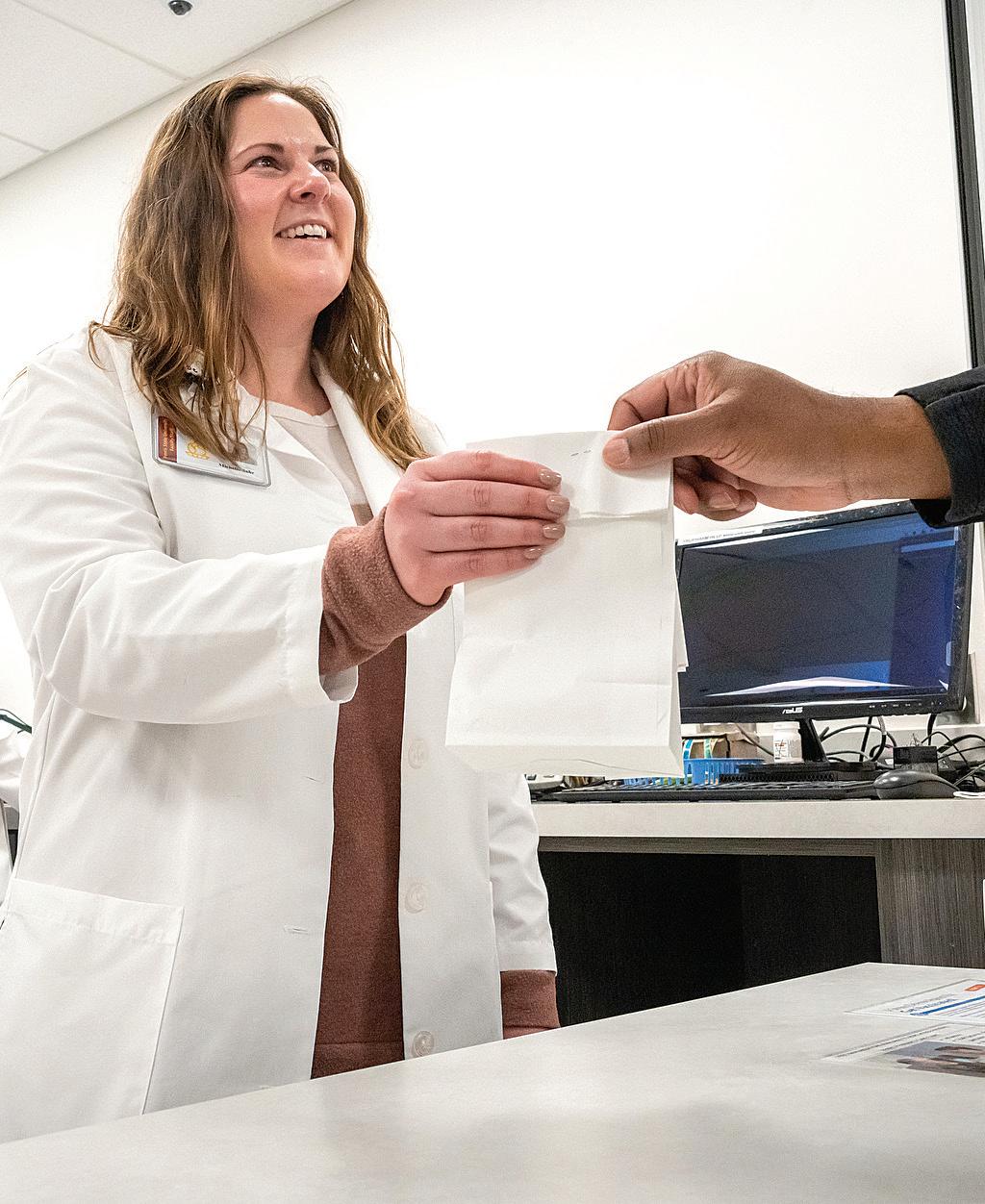
SEEKING YOUR ENGAGEMENT
142 nd President Michelle Kelly Sets Goal of 100% Member Participation in 2026
BY RYAN WEISS, MPA marketing and communications manager
Michelle Kelly has set an ambitious goal as her top priority when she is sworn in as the Michigan Pharmacists Association’s 142nd president early next year: 100% engagement from members.
She defines engagement as active participation in a local association or regional society; serving on a committee or board for any MPA-affiliated organization; or attending an MPA-sponsored conference or event.


“Our members are our greatest asset and their active involvement is essential for the growth and strength of our organization and profession,” Kelly said. “By setting an ambitious goal of full participation, we can ensure that every voice is heard and that we are united in our mission to advance the profession.”
Kelly encourages every member who is interested in getting more involved to reach out to her, MPA staff or a board member.
“We would love to find a place that fits your interests and experiences,” she said.
Kelly certainly practices what she preaches, having been an active and involved member of MPA since joining the organization during her PGY-1 year at Ferris State University. She was compelled to join MPA when FSU professor Jeff Bates encouraged students to join the association and attend the Annual Convention & Exposition in Detroit. Through the Michigan Pharmacy Foundation Adopt-a-Student program at ACE, Kelly was introduced to mentors John and Lani Ochs, and Brian Swartz, with whom she has kept in touch with more than 10 years later.
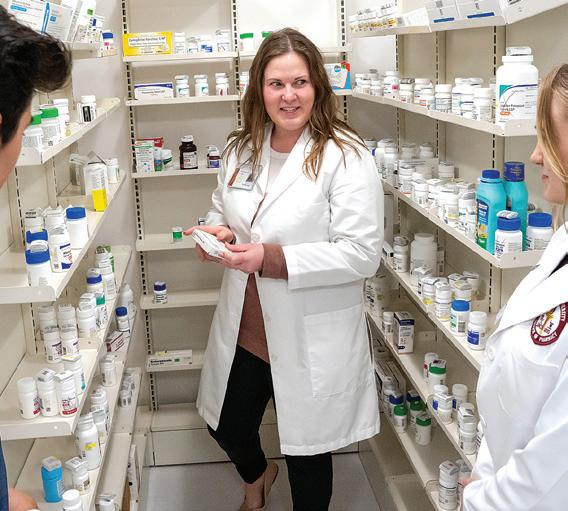
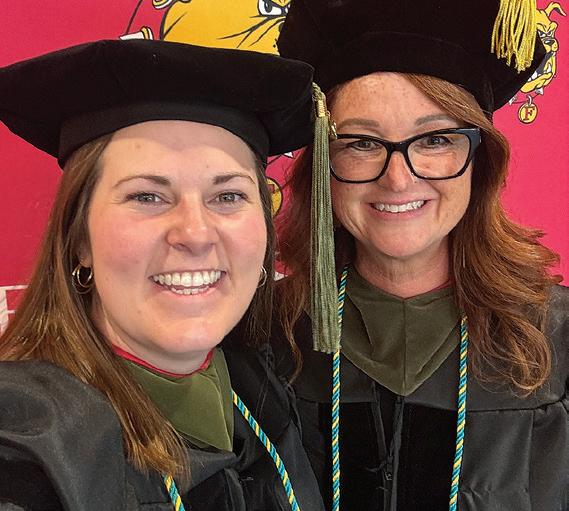
Her extensive leadership experience in MPA includes serving as a board member and president for the Kent County Pharmacists Association; as a director for the Michigan Society of Community Pharmacists; a member of the MPA New Practitioner and Membership committees; and several committees for the Michigan Society of Health-System Pharmacists.
She is also an active member of the American Pharmacists Association, National Community Pharmacists Association and the American Association of Colleges of Pharmacy.
“I believe the connections I have made with others have really helped me get to where I am now,” she said. “The value of my MPA membership has been priceless for the connections and experiences that I have been provided. I continue to learn about the profession and grow as a pharmacist and leader.”
Another focus area for Kelly will be advocacy, which she says extends beyond the legislative arena. Pharmacists need to champion their value to not just lawmakers, but to future pharmacists, other health care professionals, third-party payers and the public.
“We have a duty to keep pushing forward, promoting the essential role of pharmacists in health care and ensuring that our contributions are recognized and valued,” Kelly said. “My goal is to leave MPA stronger, more connected and more empowered than ever before. I envision an association where every member feels a sense of belonging, sees their impact and is inspired to lead the profession forward. Together, through engagement and advocacy, we will continue to shape the future of pharmacy in Michigan.”
Kelly’s interest in pharmacy spans back to her sophomore year at Reese High School in 2008. She enjoyed taking math and science classes and had a teacher recommend that she investigate pharmacy. She was further pushed toward pharmacy after tearing her ACL while playing volleyball and undergoing subsequent reconstruction surgery. During her recovery, she discussed pursuing physical therapy or pharmacy with her physical therapists – and both pushed her towards pharmacy. Kelly set up job shadows with two pharmacists, Amy Behmlander and Marc Nienhuis, at local health systems.
Kelly received her Pharm.D. from Ferris State University in 2016. Following graduation, she completed a PGY-1 community-based residency with Meijer Pharmacy, Ferris State University and Pfizer. A month after completing her residency, she began teaching full time at Ferris State, where she remains today.
As she prepares to lead MPA in 2026, Kelly said she feels truly honored and appreciative for the opportunity.
“I never dreamed I would be in this position, but I look forward to growing MPA and advancing the pharmacy profession together,” she said. “I must thank my parents for instilling in me the importance of associations and advocacy, and my husband who has supported me to be able to serve.”
"The value of my MPA membership has been priceless for the connections and experiences that I have been provided. I continue to learn about the profession and grow as a pharmacist and leader."

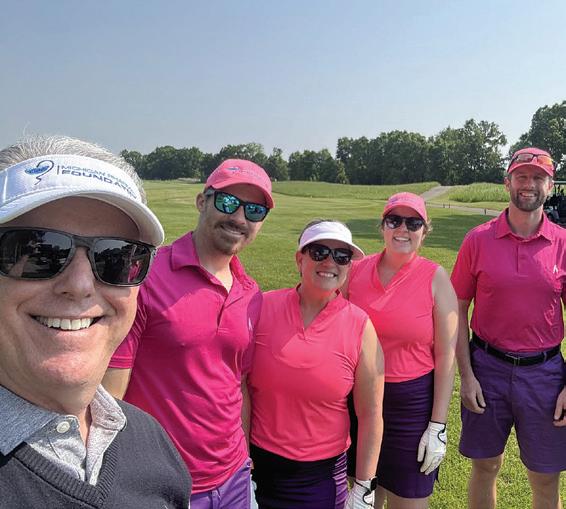
"I never dreamed I would be in this position, but I look forward to growing MPA and advancing the pharmacy profession together"

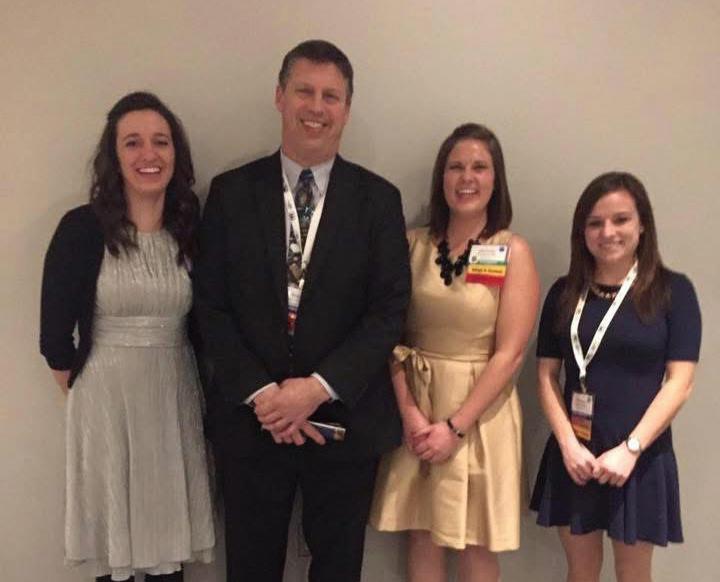



LOCAL MEETINGS AND EVENTS
Capital Area Pharmacists Association
Oct. 19 – Michigan Pharmacy Week, visit to American House in Lansing (date pending)
Oct. 20 – Wits & Wagers CE, in-person
Nov. 1 – CAPA Scholarship Application Deadline
Dec. 4 – OTCs and Herbals CE, virtual Jan. 28 – CAPA CE event, topic TBA
Macomb County Pharmacists Association
Oct. 23 – Board meeting
Nov. 20 – Board meeting
Dec. 18 – Board meeting
MPA Upper Peninsula Division
Oct. 25 – UP Fall Conference, Northern Center, Marquette
Oakland County Pharmacists Association
Nov. 13 – Board meeting
Dec. 11 – Board meeting
Wayne County Pharmacists Association
Oct. 21 – Board meeting
Nov. 18 – Board meeting
Dec. 16 – Board meeting
Contact your local association:
Capital Area Pharmacists Association: capapharm@gmail.com; website: capapharm.org
Genesee County Pharmacists Association: geneseepharmacists@gmail.com; website: geneseepharmacists.org
Great Lakes Bay Pharmacy Association: greatlakesbaypharmacy@gmail.com; website: sites.google.com/a/glbpa. com/great-lakes-bay-pharmacy-association/home
Jackson Area Pharmacists Association: Kyle Kronemeyer, president, kylerph@comcast.net
Kent County Pharmacists Association: kcpapharmacists@gmail.com
Macomb County Pharmacists Association: mcpa586@gmail.com
MPA Upper Peninsula Division: Abigail Fenton, president, afenton20212@gmail.com
Oakland County Pharmacists Association: Hanadi Thomas, president, hanadithomas@yahoo.com
Southwest Michigan Pharmacists Association: William Urfer, chair/information officer, weu123@aol.com; website: swmpa.org
Wayne County Pharmacists Association: waynepharmacists@gmail.com
Western Michigan Pharmacists Association: Bethany Latham, director, bethanyalatham@yahoo.com


THE EXPANDING ROLE OF THE PHARMACY TECHNICIAN

BY CJ HEISLER, CPHT, MPST PRESIDENT
Pharmacy technicians play a crucial role in health care, assisting pharmacists in dispensing medications, managing inventory and ensuring patient safety. In Michigan, this profession is growing due to advancements in pharmaceuticals and an aging population requiring more medical care. In the field of pharmacy, it takes a team from start to finish to ensure patient safety. A pharmacist would not be able to complete their functions and responsibilities without the help of the technician and vice versa. In recent years, the job functions of the pharmacy technician have expanded, allowing us to perform tasks that were previously only permitted for pharmacists.
The Michigan Society of Pharmacy Technicians, an affiliate of the Michigan Pharmacists Association, plays a crucial role in advocating for technicians and expanding their responsibilities.
MPA/MSPT’s Impact on Pharmacy Technicians
Annual Convention & Exposition: The House of Delegates meets to discuss resolutions that shape the pharmacy profession, including technician roles.
Legislative Advocacy: MSPT works to increase recognition of pharmacy technicians and promote their expanded use in health care settings.
Education and Training: MSPT provides continuing education programs to help technicians stay updated on industry changes.
Leadership Opportunities: Pharmacy technicians serve as liaisons to select practice section boards, ensuring their voices are heard in policy discussions.

"A pharmacist would not be able to complete their functions and responsibilities without the help of the technician and vice versa. In recent years, the job functions of the pharmacy technician have expanded, allowing us to perform tasks that were previously only permitted for pharmacists.
Increased Clinical Responsibilities
Pharmacy technicians are now involved in medication therapy management, assisting pharmacists in optimizing patient medication regimens.
Some technicians are trained to administer immunizations, a role traditionally reserved for pharmacists. They also help with medication reconciliation, ensuring patients receive the correct prescriptions during hospital admissions and discharges.
Technological Advancements
The rise of automated dispensing systems and electronic health records (EHRs) has shifted technicians' focus from manual tasks to technology management.
Telepharmacy allows technicians to assist pharmacists remotely, expanding access to pharmaceutical care in rural areas.
Specialization and Career Growth
Many technicians are pursuing specialized certifications in areas like sterile compounding, oncology and nuclear pharmacy.
Some are moving into leadership roles, managing pharmacy operations and training new technicians.
Legislative and Advocacy Efforts
Organizations like the Michigan Society of Pharmacy Technicians advocate for expanded technician roles, influencing policy changes. Pharmacy technicians now have a voice in state and national pharmacy boards, shaping the future of the profession.
I urge all technicians to become active in their local associations and practice sections. Use your voice to advance the role that pharmacy technicians have and can have in the future for our patients.

BECOMING A VOICE FOR FELLOW TECHNICIANS
BY ADAM KING, MPH, CPhT, PRS, MSPT Board of Directors
MPA’s vision for the last three years has been one pharmacy profession, maximizing health and wellness. That vision includes pharmacy technicians. As one of the founding members of the Pharmacy Technician Certification Board, MPA advocates for technicians and gives them a seat at the table to shape the future of our profession.
That vision cannot be achieved by MPA staff alone and you can be the next voice for our profession.
Be the Change
Technicians serve in multiple aspects of the association, including the practice section boards, its special interest groups (SIGs), and various committees focused on improving the practice of pharmacy. As of 2024, technicians are now able to serve as officers on the executive committee.
Serving on MPA boards and committees allows plenty of time for networking with various pharmacy leaders across Michigan. This collaboration keeps board members up to date with new and upcoming policy changes at the state and federal levels. Board members also act as a conduit for change by liaising with MPA staff, political leaders and MPA members.
Each year, MPA solicits from the House of Delegates a list of members that are interested in serving on the Michigan Board of Pharmacy. By law, the Board of Pharmacy must have one technician member. The list that MPA collects is used when board vacancies need to be filled.
Also, members that serve on boards and serve as practice leaders earn association points toward the MPA Hall of Honor.
Come to Speak, Stay for the CE
Did you know that technicians frequently present continuing education at MPA events? It’s true! If you have a best practice suggestion, are an expert in a technician practice area, or have ways to improve the practice of pharmacy, we’d love to hear all about it.
This improves patient care, patient safety and pharmacy practice. Not only is knowledge shared with hundreds of pharmacy leaders, but there are also perks offered by MPA for serving the profession in this manner.
Advocate for Pharmacy
Every other year in September, MPA hosts members on the lawn of the Capitol in Lansing for Pharmacy Day at the Capitol. Members in attendance show off their profession to legislators and support staff. MPA staff arranges meetings with various legislators to talk about improving pharmacy across the state.
"Decisions are made by those who show up."
Pharmacy students participate in one of the largest drug disposal events in the state, collecting tons of medication that is properly destroyed. Legislators also get their annual influenza and COVID-19 vaccines offered by pharmacists in attendance.
Our Progress
Prior to 2024, technician officers were limited to the MSPT Board of Directors. Several local associations and MPA now allow technician officers. Check with your local association to see if they allow technicians on their board of directors.
Over the last decade, several MSPT members have served as presidents of their local association including:
• Tisha Peterson, Northwestern Michigan Pharmacists Association (2017)
• Keith Binion, Wayne County Pharmacists Association (2024)
• Lisa Ausmus, Oakland County Pharmacists Association (2024)
• Adam King, Kent County Pharmacists Association (upcoming in 2026)
To quote the great Jed Bartlet from “The West Wing:”
“Decisions are made by those who show up.”
Will you answer the call?
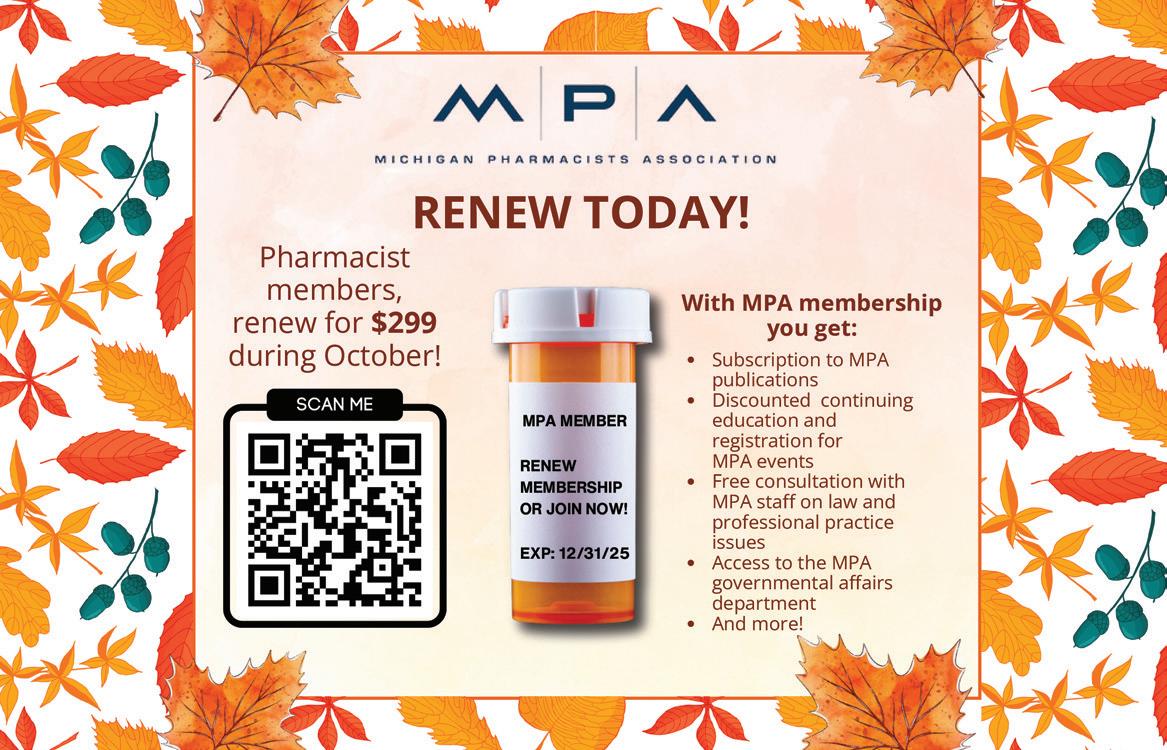
ILLEGIBLE SIGNATURE? AUDITORS ARE TAKING NOTE!
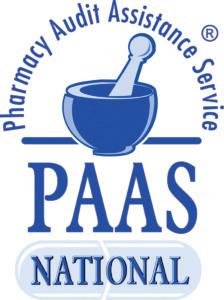
BY TRENTON THIEDE, Pharm.D., MBA,
president, PAAS National®, expert third-party audit assistance and FWA/HIPAA compliance
A recent audit trend shows that some major PBMs are challenging the perceived legitimacy of patient signatures. Humana and OptumRx have been citing signature logs as discrepant when there is only a line, squiggle, printed first or last name, or initials in lieu of a “proper signature.” The auditor asserts that the pharmacy, not the patient, signed these prescriptions out, negating the proof that the patient confirmed receipt of the medication.
Humana uses the discrepancy code “ISL” and notes that the “signature log sent does not contain a signature.” OptumRx uses the discrepancy code “2B” and notes that “no signature … present on received receipt/log.” While some avenues exist for appeal, it’s predicated on the PBM and best to avoid this nuisance altogether.
PAAS National® also continues to see audit trouble when pharmacy staff sign “delivery/DEL/mail” when delivering or mailing out the prescription to a patient or “DT/drive-thru” when the patient picks up their medication from the drive-thru (or curbside). If a PIN pad needs to be signed out in this fashion to complete an electronic transaction, it’s advisable to collect a manual signature from the patient for your records. Many POS systems allow you to scan these signatures back into the system for electronic recordkeeping.
PAAS Tips:
• Remind staff that signatures are required for all in-store pick-up and delivered prescriptions
• Obtain complete signatures from patients/representatives whenever possible
• If a patient refuses to sign with a complete signature, consider the following:
o Explain that their insurance, not the pharmacy, requires a legible signature for proof of receipt
o This can be an opportunity to highlight (in a non-disparaging way) that PBMs are ruthless on audits and that a missing signature means you could be out hundreds or thousands of dollars each time they refuse to sign
o If a patient still refuses to sign for expensive medications, you could offer to reverse the claim and bill it without their insurance
• Signature logs should contain four elements:
o Prescription number
o Date of service or refill number
o Date of pick-up/date received
o Patient’s/patient representative’s signature
• Pharmacy staff should NOT sign/print the patient’s name for them, use their initials, or jot a line or squiggle to give the appearance of the patient signing
• If delivering a prescription, delivery logs should contain:
o Patient’s name
o Prescription number
o Date of service or refill number
o Date delivered (handwritten by the person receiving the delivery or electronically time-stamped when signing)
o Delivery address
Copyright © 2025 PAAS National, LLC.
Unauthorized use or distribution prohibited. All use subject to terms at https://paasnational. com/terms-of-use/.
o Patient’s/patient representative’s signature

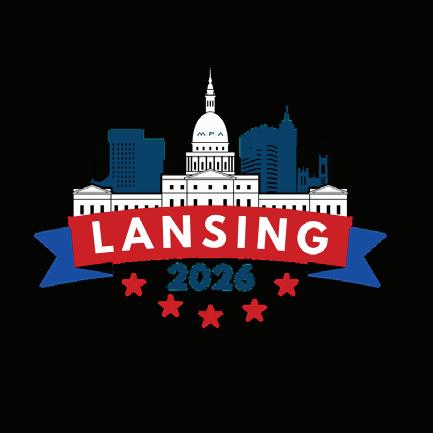
We Don’t Just Process Claims—
We Show Up When It Matters.

When a claim is filed, it’s often during a stressful moment. That’s why Pharmacists Mutual focuses on more than just paperwork. We deliver clarity, speed, and compassion, so you never face uncertainty alone.
“Every claim tells a story, and we take that seriously,” says Todd Terhark, Claims Service Manager. “By tracking performance, training continuously, and leading with empathy, our team ensures every policyholder gets the support they need—when it matters most.”
Real Stories That Make it Real of policyholders contacted within 8 business hours 96.1% contacted within just 4 hours 60%
“Pharmacists Mutual did an amazing job! They were fast, efficient, and helped me through the process. Excellent service over the last 23 years. The claims team called me the same day. I didn’t expect it, and it meant everything to me.”

Imagine discovering an error you were involved in may have harmed a patient—and now you must report it. When you call Pharmacists Mutual, you’ll speak with a claims team that truly understands pharmacy. They know the medications and processes, and they handle your claim with knowledge, compassion, and understanding.
–Kristen Jones, PharmD
When time matters, we don’t wait.
With over a century of commitment to pharmacy professionals, Pharmacists Mutual is built to be there for you—quickly, personally, and with purpose.
–Pharmacist, Policyholder Scan the QR code or call
